
Late this afternoon, Microsoft answered a question oft-asked by investors this month: What's up with Windows 8? The new operating system, which launched October 26, was supposed to lift sagging PC sales and demonstrate the capability to successfully compete with so-called post-PC platforms like Android and iOS. Now we know more. Windows & Windows Live revenue passed Business, making the OS division most-valuable again.
For fiscal second quarter, ended December 31, Microsoft revenue was $21.46 billion, up 3 percent year over year. Operating income: $7.77 billion, a 3 percent decrease. Net income was $6.38 billion, or 76 cents a share.
Average analyst consensus was $21.53 billion revenue and 74 cents earnings per share, for the quarter. Revenue estimates ranged from $19.94 billion to $23.32 billion, with estimated year-over-year growth of 3.1 percent -- mighty modest for a holiday quarter when new PC and phone operating systems launched and Microsoft released its first tablet, Surface RT.
Shares dipped by 2 percent in early after-market trading, falling to $27.06 from the $27.63 close. Like Apple yesterday, Microsoft beat earnings consensus but missed on sales.
When adjusting for the impact of Office and Windows upgrade offers (meaning non-GAAP view), revenue grew by 5 percent to $22 billion, operating income by 4 percent to $8.3 billion, and EPS by 4 percent to 81 cents.
"Our big, bold ambition to reimagine Windows as well as launch Surface and Windows Phone 8 has sparked growing enthusiasm with our customers and unprecedented opportunity and creativity with our partners and developers", CEO Steve Ballmer boasts. "With new Windows devices, including Surface Pro, and the new Office on the horizon, we’ll continue to drive excitement for the Windows ecosystem and deliver our software through devices and services people love and businesses need".
Windows & Windows Live revenue rose 24 percent year over year to $5.88 billion, buoyed by a deferral from the previous quarter. Without the extra lift, revenue still increased by 11 percent.
Microsoft's Perception Problem
As I've oft said, in business, perception is everything. To many people, Windows is Microsoft and the fate of one influences the other. Perception is a devil. Take Apple, for example, which reported $54.5 billion revenue and $13.06 billion net income yesterday. Today, shares closed down 12.35 percent, in part on perception that growth days are over, despite simply huge quarterly numbers. Microsoft's problem is by no means comparable, but Apple's situation makes a point. If investors so punish the company for such a great quarter, what can negative or positive perceptions about Windows' future do?
Microsoft is no longer bound to Windows, despite marketing hype about "reimagining". In October, CEO Steve Ballmer described the company's new direction as "devices and services". The Business division, with flagship Office, generally generates more revenue than Windows & Windows Live, and last quarter Server & Tools did, too. The company is in process of removing dependence on Windows as top to its hugely successful vertical applications stack built around Office and server software and now extended through cloud services, such as 365, Azure, Skype and SkyDrive among many others. Windows is still hugely valuable, and anchors a huge ecosystem, but Microsoft can transcend the OS.
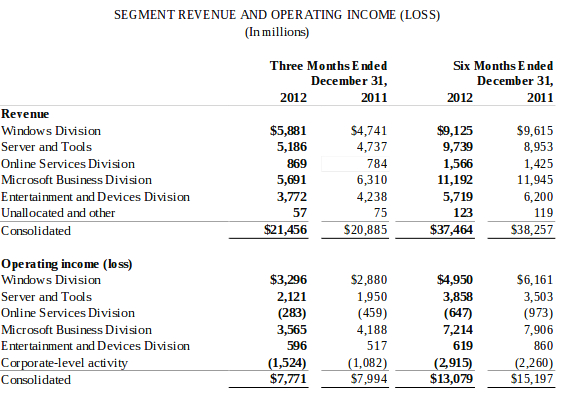
The problem: Public sentiment says something else -- that Windows can't compete in the post-PC, what I call connected-devices, era. If Windows can't, neither can Microsoft. I don't agree. Microsoft's apps, datacenter and server software already are primed to serve multiple devices -- not just the PC -- and that's a longstanding development strategy now far advanced. Microsoft is ready to move beyond Windows, and the holiday quarter PC shipments show such a future is inevitable. Windows won't go away but stand alongside other platforms rather than being the overwhelmingly dominant one.
Business and Server & Tools succeed for many reasons, and they will continue to do so as long as enterprises stay the course buying annuity contracts. Combined, more than half the two groups' revenues come from volume-licensing contracts with Software Assurance.
Companies get the license and annually pay 25 percent or 29 percent of the full price to get upgrades (or even to exercise downgrade rights) over two- or three-year periods. Software Assurance insulates Microsoft from economies' ups and downs and those for PC purchases. If ever businesses back away in mass from annuity or subscription contracts, that's the day to seriously worry about Microsoft's future.
Whither Windows 8
Where the flagship operating system matters most is where Microsoft tries to take it: touchscreen devices, such as hybrids and tablets, with Surface RT and Pro serving as reference-designs for OEM partners to emulate. The Redmond, Wash.-based company announced plans to port Windows to ARM processors in January 2011, then followed up with the tile-based Modern UI that unifies ARM and x86 operating systems, including Windows Phone. Pundits poo-poo PC shipments, which stank in Q4, as evidence Surface and Windows 8 are failures. I ask: By what measure? Seems to me, Microsoft already changed Windows' course to embrace a broader range of devices, with a unifying UI. Transitions like this take time to succeed, or fail.
There is need. Had Microsoft not made-over Windows, the problem wouldn't be perception but crisis very real. Three legs support the profit center, and Windows bound to traditional PCs would be one cut off. Instead, Windows 8 holds future device promise. Much depends on the devices the company and its partners produce and apps and services supporting them. Honestly, looking at holiday PC lineup, Surface RT is about the only thing looking good. OEMs failed to deliver compelling products that get people buying.
PCs continued their more-than-year-long collapse during fourth quarter. Windows 8 gave no meaningful lift. Shipments fell 4.9 percent year over year, according to Gartner. For all 2012: down 3.5 percent. Manufacturers shipped 90.3 million and 352.7 million units for the respective time periods. IDC offers grimmer perspective: PC shipments fell 6.4 percent for Q4 -- two points more than forecast -- and 3.2 percent for the year.

Consumers aren't buying Windows PCs like they used to, and their infatuation with iPad, some other tablets and smartphones, is spreading. "Tablets have dramatically changed the device landscape for PCs, not so much by 'cannibalizing' PC sales, but by causing PC users to shift consumption to tablets rather than replacing older PCs", Mikako Kitagawa, Gartner principal analyst, says, speaking about Q4 PC shipments.
She no longer believes that PCs and tablets will coexist for a meaningful time. "There will be some individuals who retain both, but we believe they will be exception and not the norm. Therefore, we hypothesize that buyers will not replace secondary PCs in the household, instead allowing them to age out and shifting consumption to a tablet".
Combine that with the bring-your-own-device (BYOD) to work movement, and the future looks grim. Or does it? Microsoft already has its apps, cloud and server businesses primed for BYOD, as I've written here before. Then there is broader context, for those calling Windows 8 a flop because PC shipments fell in Q4. Apple got hit, too. Analyst consensus was for 5.2 million Macs shipped, but only 4.1 million did. Yesterday, Apple CEO Tim Cook laid blame on late delivery of new iMacs. He said that Mac shipments would have been otherwise higher.
I don't find that credible. But let's assume for a moment he's right. iMac is an expensive beast, starting at 1,299 and selling for as much as $1,999 in standard config. If Apple can command such selling strength, why can't Microsoft OEMs? They should, by releasing innovative hybrid desktop and portable designs that capitalize on Windows 8's best features. I contend they did not in fourth quarter.
Something else to consider when looking at the PC market and future of Windows. In a compelling rebuttal to claims the PC is dying, Derrick Wlodarz, who owns a computer repair business, makes an observation often ignored: "Whereas customers of mine were getting 3-4 years out of machines back in the early 2000s, they now push their PCs to 4-6 year replacement cycles without much sweat". Major reason: Older hardware has more than enough processor and graphics power to meet modern needs.
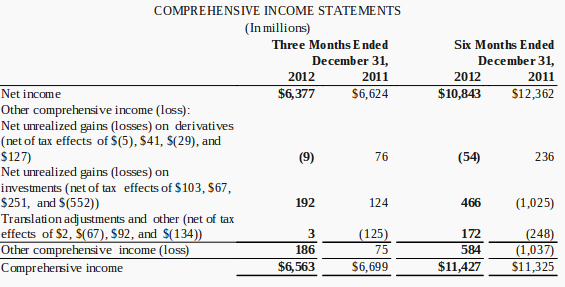
"Now, a Windows Vista or newer PC could likely run on for five, six, seven or possibly more years without much issue. And this is the untold trend that I see in my customer base", he asserts. "Solid, secure operating systems installed onto well-engineered computer hardware equals a darn long system life".
So if the PC in the den or office is good enough and not in need of replacement, why not buy a new smartphone or tablet? Remember: Microsoft pushes ahead with solutions for both these categories. Then there is fourth quarter to consider, where Windows delivered solid growth -- now if only the broader ecosystem could capitalize upon it.
Division Highlights
Microsoft reports revenue and earnings results for five divisions: Windows & Windows Live, Server & Tools, Business, Online Services and Entertainment & Devices.
Windows & Windows Live. Revenue soared 24 percent year over year despite weak PC sales, surely buoyed by low-cost Windows Pro upgrade price that ends January 31. A $622 million deferral helped lift revenue to $5.88 billion. Without it, revenue would have grown by 11 percent.
To date Microsoft has sold 60-million Windows 8 licenses.
OEM revenue grew by 17 percent, outpacing the broader PC market.
Server & Tools. "We see strong momentum in our enterprise business", Microsoft COO Kevin Turner says. "With the launch of SQL Server 2012 and Windows Server 2012, we continue to see healthy growth in our data platform and infrastructure businesses and win share from our competitors. With the coming launch of the new Office, we will provide a cloud-enabled suite of products that will deliver unparalleled productivity and flexibility".
Revenue rose 9 percent, or $347 million, to $5.19 billion. As previously mentioned, the division is insulated against economic maladies, because about 50 percent of revenues come from contractual volume-licensing agreements.
New bookings increased by 15 percent. Meanwhile System Center revenue grew by 18 percent and SQL Server by 16 percent.
Business. "We saw strong growth in our enterprise business driven by multi-year commitments to the Microsoft platform, which positions us well for long-term growth", Microsoft CFO Peter Klein says. "Multi-year licensing revenue grew double-digits across Windows, Server & Tools, and the Microsoft Business Division".
Despite touted growth, revenue fell by 10 percent year over year to $5.69 billion. However, when removing adjustments for Office upgrade offer and pre-sales, revenue grew by 3 percent.
Bookings increased by 18 percent and multi-year licensing by 10 percent. However, consumer revenue fell by 2 percent.
Like Server & Tools, Business division is largely insulated against sluggish PC sales. Sixty percent of revenue comes from annuity licensing to businesses.
Online Services Business. Online services revenue rose by 10 percent, or $109 million, to $823 million. However, the division remains unprofitable. Search and display ads drove up online advertising revenue by 15 percent.
Entertainment & Devices. Microsoft shipped 5.2 million Xbox consoles, down from 8.2 million a holiday quarter earlier. As a platform, Xbox 360 revenue fell 29 percent, or $1.1 billion.
Xbox Live subscriptions now exceed 40 million.
Windows Phone sales are up 4 times year over year, which is a polite way of saying they're not good enough. If they were, Microsoft would say how many.
Users made 138 billion Skype calls, up 59 percent year over year.








 Little more than two weeks after
Little more than two weeks after  So what about Carbon's options? Upon opening the backup tool, users can select the apps by going through the list and ticking individual items. They can also add them into groups for easier handling and choose whether to include the app within backups (by default only the data is backed up). Carbon can also be used to transfer apps with data between devices and restore items from the USB storage.
So what about Carbon's options? Upon opening the backup tool, users can select the apps by going through the list and ticking individual items. They can also add them into groups for easier handling and choose whether to include the app within backups (by default only the data is backed up). Carbon can also be used to transfer apps with data between devices and restore items from the USB storage. Microsoft has started paying much closer attention to Internet Explorer recently. The company pushed out both IE9 and IE10 in fast succession and has been trying to entice back past users with its
Microsoft has started paying much closer attention to Internet Explorer recently. The company pushed out both IE9 and IE10 in fast succession and has been trying to entice back past users with its 
 Google Maps and Street View provide detailed coverage of much of the world, and today the search giant is adding the Grand Canyon to its list of fully explorable locations.
Google Maps and Street View provide detailed coverage of much of the world, and today the search giant is adding the Grand Canyon to its list of fully explorable locations. When you need to download a local copy of an online video then there are plenty of tools around which will try to help.
When you need to download a local copy of an online video then there are plenty of tools around which will try to help. 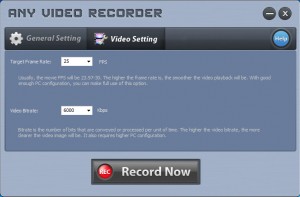 In our tests the automatic detection was generally poor, never getting it completely right. But fortunately the red rectangle can be quickly resized and repositioned with your mouse to match the actual area you’d like to record.
In our tests the automatic detection was generally poor, never getting it completely right. But fortunately the red rectangle can be quickly resized and repositioned with your mouse to match the actual area you’d like to record. EE (formerly Everything Everywhere) was created by the merger of the T-Mobile and Orange businesses in 2010, becoming the UK’s largest mobile network operator in the process. It’s also currently the only provider offering 4G LTE connectivity in the UK, and has just expanded its 4G data service to cover an additional nine towns and cities.
EE (formerly Everything Everywhere) was created by the merger of the T-Mobile and Orange businesses in 2010, becoming the UK’s largest mobile network operator in the process. It’s also currently the only provider offering 4G LTE connectivity in the UK, and has just expanded its 4G data service to cover an additional nine towns and cities. Norwegian browser developer Opera has announced its first release of 2013.
Norwegian browser developer Opera has announced its first release of 2013.  The update also includes four security fixes: one where manipulation of DOM events could have been used to execute arbitrary code, another that saw the potential use of SVG clipPaths for executing arbitrary code and a third where CORS (Cross-Origin Resource Sharing) requests could omit the preflight request that was used as protection as Cross Site Request Forgery (XSRF) attacks. A fourth fix is described merely as a "low severity security issue".
The update also includes four security fixes: one where manipulation of DOM events could have been used to execute arbitrary code, another that saw the potential use of SVG clipPaths for executing arbitrary code and a third where CORS (Cross-Origin Resource Sharing) requests could omit the preflight request that was used as protection as Cross Site Request Forgery (XSRF) attacks. A fourth fix is described merely as a "low severity security issue". On 24 August 2012, after a thirteen day trial and three full days of deliberation, a California jury found Samsung guilty of infringing on several Apple patents and awarded the American company
On 24 August 2012, after a thirteen day trial and three full days of deliberation, a California jury found Samsung guilty of infringing on several Apple patents and awarded the American company 
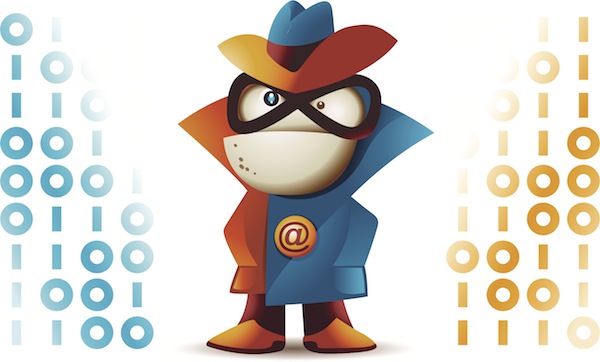



 Although the Raspberry Pi was originally aimed at encouraging school children to learn to program as they did in 1980s and 90s, the affordable credit card-sized
Although the Raspberry Pi was originally aimed at encouraging school children to learn to program as they did in 1980s and 90s, the affordable credit card-sized  Oracle has had no shortage of headaches recently, thanks to Java. The exploits have been running wild lately, making attempts to fix the problems resemble a game of whack-a-mole. In fact, the troubles even resulted in the United States Department of Homeland Security being forced to
Oracle has had no shortage of headaches recently, thanks to Java. The exploits have been running wild lately, making attempts to fix the problems resemble a game of whack-a-mole. In fact, the troubles even resulted in the United States Department of Homeland Security being forced to  Apple attracts rumors like no other tech company. In the past week alone we’ve heard about what to expect from the iPad 5, suggestions that Apple is working on a budget iPhone that may or may not feature plenty of plastic in its design, and there’s even been talk of a larger capacity iPad 4.
Apple attracts rumors like no other tech company. In the past week alone we’ve heard about what to expect from the iPad 5, suggestions that Apple is working on a budget iPhone that may or may not feature plenty of plastic in its design, and there’s even been talk of a larger capacity iPad 4. Right after Kim Dotcom
Right after Kim Dotcom  Another day, another Galaxy smartphone. On Tuesday, Samsung unveiled a new handset as part of the company's ever expanding Galaxy lineup, this one dubbed the Galaxy Express.
Another day, another Galaxy smartphone. On Tuesday, Samsung unveiled a new handset as part of the company's ever expanding Galaxy lineup, this one dubbed the Galaxy Express. Shutting down your PC is often simple and straightforward. You finish what you’re doing, save your work, close any applications and hit the shutdown button: done.
Shutting down your PC is often simple and straightforward. You finish what you’re doing, save your work, close any applications and hit the shutdown button: done. And, while there’s no local help, the straightforward interface means you’re unlikely to have any major questions about its core functionality. Take the default "Countdown" event, for instance: all you have to do is set a timer to 5 minutes, 1 hour or whatever, choose the action you’d like performed at the end of that time (Shutdown, Sleep, Hibernate, Logoff and so on), and click Start. Shutter will begin the countdown and carry out your chosen action after the defined time.
And, while there’s no local help, the straightforward interface means you’re unlikely to have any major questions about its core functionality. Take the default "Countdown" event, for instance: all you have to do is set a timer to 5 minutes, 1 hour or whatever, choose the action you’d like performed at the end of that time (Shutdown, Sleep, Hibernate, Logoff and so on), and click Start. Shutter will begin the countdown and carry out your chosen action after the defined time. Red seems to be the in color for mobile devices at the moment. First Verizon gave the world a red edition of Nokia's mid-range
Red seems to be the in color for mobile devices at the moment. First Verizon gave the world a red edition of Nokia's mid-range  Social networks are great, in theory. But then you run into problems with other users, advertising, spam, unexpected and unnecessary interface redesigns, security issues, privacy problems and the list goes on.
Social networks are great, in theory. But then you run into problems with other users, advertising, spam, unexpected and unnecessary interface redesigns, security issues, privacy problems and the list goes on. And there may be issues in connecting from behind a firewall, too, although it all depends on your setup: if UPnP is working then all should be well, if not then there may be some further configuration necessary (the official documentation
And there may be issues in connecting from behind a firewall, too, although it all depends on your setup: if UPnP is working then all should be well, if not then there may be some further configuration necessary (the official documentation  Budapest developer FinalWire Ltd has released
Budapest developer FinalWire Ltd has released  In addition to extending support, AIDA 2.80 also improves its support of Intel’s "Haswell" range of APUs and its "Lynx Point" PCH. There’s also support for APP SDK 2.8, OpenCL 1.2 Update, OpenGL ES 3.0 and Simple Firmware Interfaces.
In addition to extending support, AIDA 2.80 also improves its support of Intel’s "Haswell" range of APUs and its "Lynx Point" PCH. There’s also support for APP SDK 2.8, OpenCL 1.2 Update, OpenGL ES 3.0 and Simple Firmware Interfaces. After
After  Microsoft also offers Outlook 2013, Publisher 2013 and Access 2013 for $109.99, Visio Standard 2013 runs for $299.99, Visio Professional 2013 and Project Standard 2013 go for $589.99, with Project Professional 2013 topping the charts at $1,159.99.
Microsoft also offers Outlook 2013, Publisher 2013 and Access 2013 for $109.99, Visio Standard 2013 runs for $299.99, Visio Professional 2013 and Project Standard 2013 go for $589.99, with Project Professional 2013 topping the charts at $1,159.99.
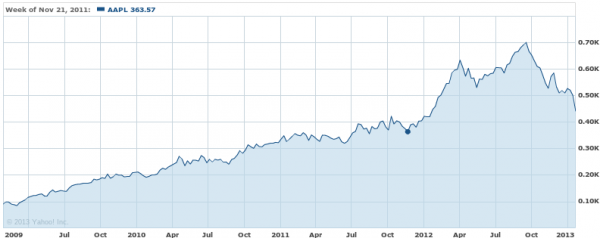





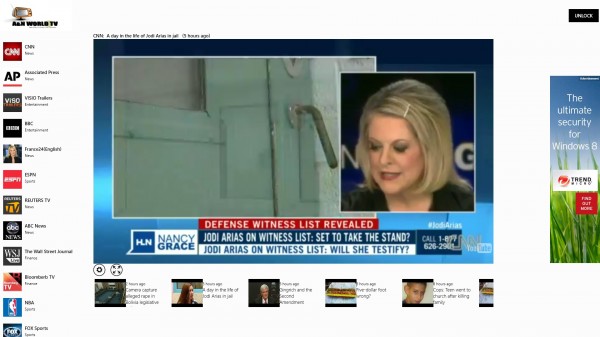
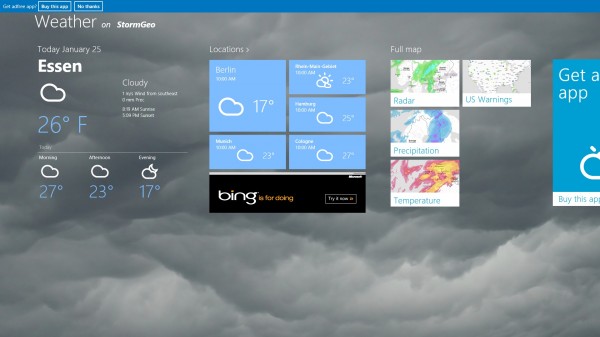
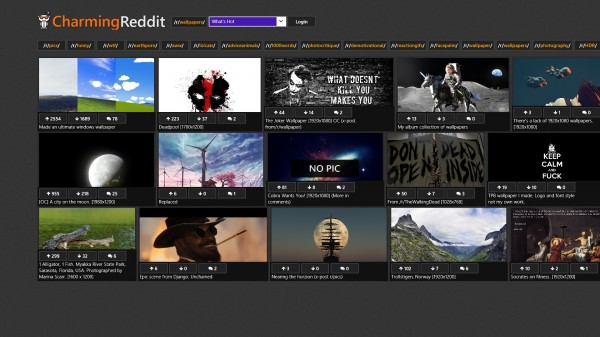



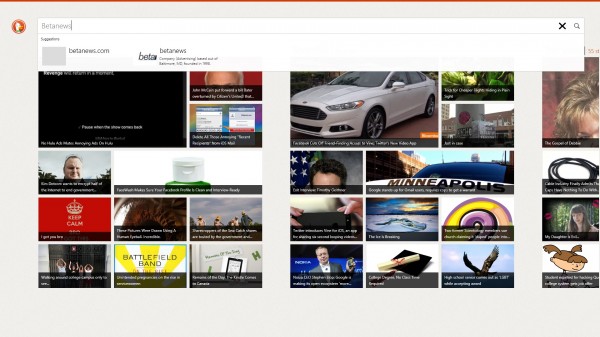


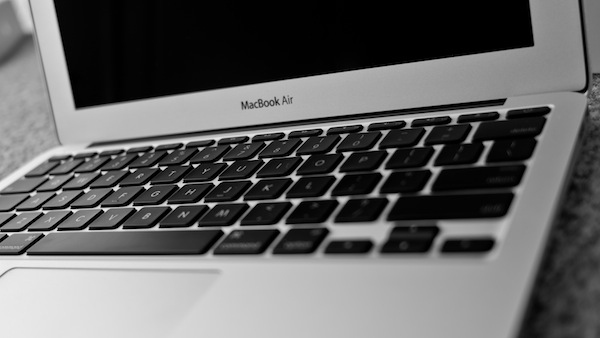


 Downloading is such a fundamental part of the online experience that you might expect every browser to include a quality download manager by default. The standard offerings are usually a little more basic, though, so if you’d like some help in, say, downloading online videos more easily, then you’ll need to install a specialist download manager like the new EagleGet.
Downloading is such a fundamental part of the online experience that you might expect every browser to include a quality download manager by default. The standard offerings are usually a little more basic, though, so if you’d like some help in, say, downloading online videos more easily, then you’ll need to install a specialist download manager like the new EagleGet. EagleGet is also very new, and still in beta, so unsurprisingly it has its share of issues. And most are trivial, like the number of spelling mistakes throughout the interface, or the way it insists on displaying its tiny status toolbar all the time, even when the rest of the application has been minimized.
EagleGet is also very new, and still in beta, so unsurprisingly it has its share of issues. And most are trivial, like the number of spelling mistakes throughout the interface, or the way it insists on displaying its tiny status toolbar all the time, even when the rest of the application has been minimized.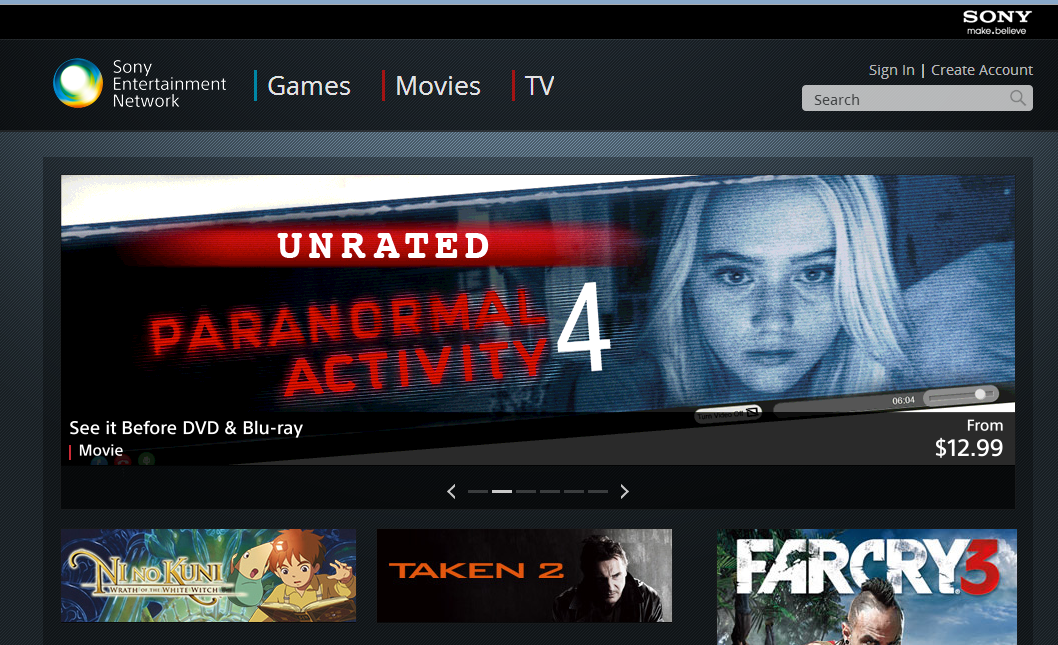 If you are looking to cut the cord to your cable or satellite provider, you have an ever-increasing number of options to fill that sudden void. There's Hulu, Netflix and the recent
If you are looking to cut the cord to your cable or satellite provider, you have an ever-increasing number of options to fill that sudden void. There's Hulu, Netflix and the recent  Piriform has released
Piriform has released  enhancements include better compatibility with Google Chrome extensions, improved Unicode text support and a new Burmese translation. The update is rounded off with the usual GUI tweaks and bug fixes.
enhancements include better compatibility with Google Chrome extensions, improved Unicode text support and a new Burmese translation. The update is rounded off with the usual GUI tweaks and bug fixes. Introduced in time for last year’s Olympics, Virgin Media’s free
Introduced in time for last year’s Olympics, Virgin Media’s free  Valentine’s Day is coming and since nothing says "I love you" more than a Windows Phone, Verizon has decided to mark the occasion by debuting a red edition of Nokia's mid-range
Valentine’s Day is coming and since nothing says "I love you" more than a Windows Phone, Verizon has decided to mark the occasion by debuting a red edition of Nokia's mid-range 






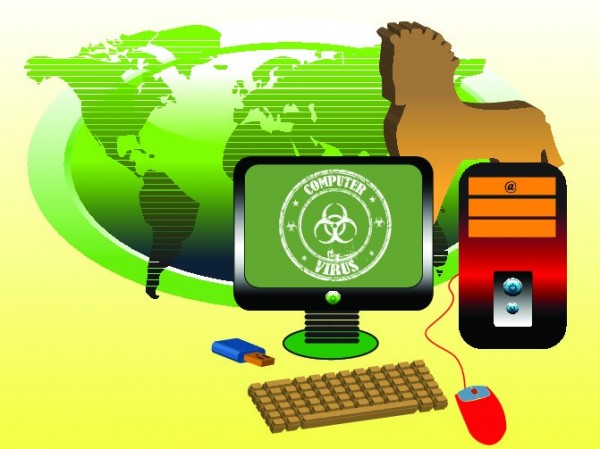
 Apple used to be quite picky about what apps it let through into the App Store, but it’s relaxed the rules in recent times, and now we’ve reached the point where an app that lets you measure your member and see how you compare in the length and/or girth world rankings is perfectly fine.
Apple used to be quite picky about what apps it let through into the App Store, but it’s relaxed the rules in recent times, and now we’ve reached the point where an app that lets you measure your member and see how you compare in the length and/or girth world rankings is perfectly fine.

 The first video tweet using an app from Vine, the start-up Twitter acquired last year, has appeared on the micro-blogging site. Originally created and sent by
The first video tweet using an app from Vine, the start-up Twitter acquired last year, has appeared on the micro-blogging site. Originally created and sent by  Symantec
Symantec The change of direction also means a restructuring of the company. As well as the creation of a new "Office of the CEO" group, Symantec aims to reduce the number of executives and middle management positions and give front-line employees greater power and flexibility to deal with customer’s needs.
The change of direction also means a restructuring of the company. As well as the creation of a new "Office of the CEO" group, Symantec aims to reduce the number of executives and middle management positions and give front-line employees greater power and flexibility to deal with customer’s needs. AVCLabs has released
AVCLabs has released  The latest build also takes full advantage of NVIDIA CUDA acceleration (which must be manually enabled in the program settings) to convert videos up to six times faster using compatible NVDIA graphics. AVC Free 5.0.2 also promises to make use of multi-core processors for faster conversion times.
The latest build also takes full advantage of NVIDIA CUDA acceleration (which must be manually enabled in the program settings) to convert videos up to six times faster using compatible NVDIA graphics. AVC Free 5.0.2 also promises to make use of multi-core processors for faster conversion times. Having to reinstall software is never exactly fun, but it gets particularly annoying if you’ve been unfortunate enough to lose the CD case, email or whatever else contained that application’s product key. Especially if the developer isn’t able to send you a reminder.
Having to reinstall software is never exactly fun, but it gets particularly annoying if you’ve been unfortunate enough to lose the CD case, email or whatever else contained that application’s product key. Especially if the developer isn’t able to send you a reminder. But, amongst the high volume of junk, there were also real product keys for Macrium Reflect, VMware Workstation, Cyberlink PowerProducer and more. And because the program is using a generic detection technique, it could find keys for many other apps, even those which aren’t supported by apparently more powerful key recovery tools.
But, amongst the high volume of junk, there were also real product keys for Macrium Reflect, VMware Workstation, Cyberlink PowerProducer and more. And because the program is using a generic detection technique, it could find keys for many other apps, even those which aren’t supported by apparently more powerful key recovery tools.





 I remember clearly where I was the day Internet Explorer launched. It was 16 August 1995 and I was sitting in a room full of tech writers watching Bill Gates show off Microsoft’s new browser. And I recall thinking, "why would anyone want to use anything other than Netscape Navigator?"
I remember clearly where I was the day Internet Explorer launched. It was 16 August 1995 and I was sitting in a room full of tech writers watching Bill Gates show off Microsoft’s new browser. And I recall thinking, "why would anyone want to use anything other than Netscape Navigator?"



 And although Effective File Search doesn’t have an indexing component, which inevitably cuts performance, it does have some other tricks which can help. In particular, you don’t just have to point the program at a single directory tree; instead, you can create a list of commonly-used folders which it should search, and used wisely that can make a real difference to overall speeds.
And although Effective File Search doesn’t have an indexing component, which inevitably cuts performance, it does have some other tricks which can help. In particular, you don’t just have to point the program at a single directory tree; instead, you can create a list of commonly-used folders which it should search, and used wisely that can make a real difference to overall speeds. Berlin developer O&O Software GmbH has released
Berlin developer O&O Software GmbH has released  The Schedule settings tab now provides users with the option of setting up an automatic schedule for backing up: one-time only, daily and weekly. The latter two settings provide options for setting a start date and time, plus choose a recurring period and set days of the week if relevant.
The Schedule settings tab now provides users with the option of setting up an automatic schedule for backing up: one-time only, daily and weekly. The latter two settings provide options for setting a start date and time, plus choose a recurring period and set days of the week if relevant.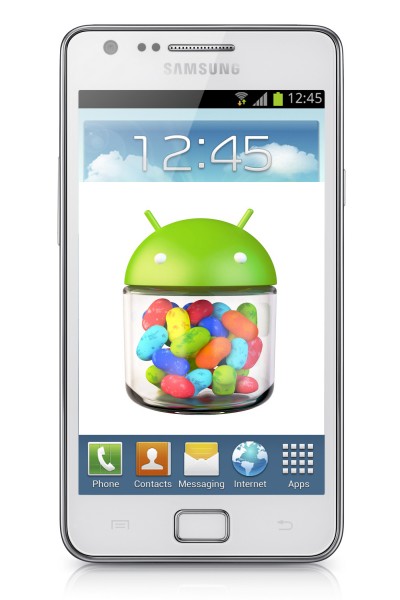 Ever since
Ever since  There are many fine travel apps for the Android platform, some of which I
There are many fine travel apps for the Android platform, some of which I 

 And when you find something you like, then downloading is as easy as choosing the 32 or 64-bit option, and clicking the Download button.
And when you find something you like, then downloading is as easy as choosing the 32 or 64-bit option, and clicking the Download button. Nikon is to launch a new online photo-sharing service on January 28. The successor to the Japanese firm’s
Nikon is to launch a new online photo-sharing service on January 28. The successor to the Japanese firm’s 



 Managing the software on your PC can sometimes feel like a full-time job, as you have to find the best applications, download and install each one, then do your best to keep them up-to-date.
Managing the software on your PC can sometimes feel like a full-time job, as you have to find the best applications, download and install each one, then do your best to keep them up-to-date.
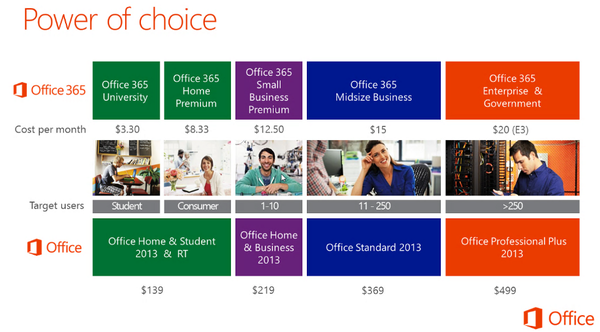

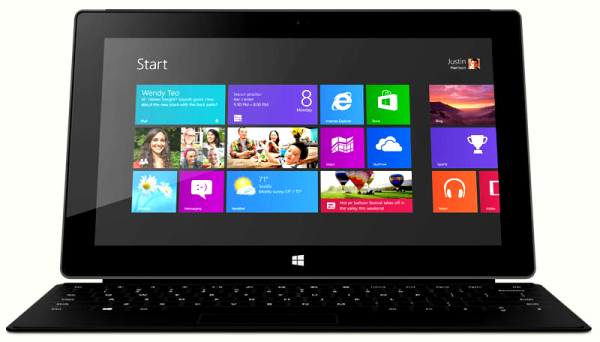


 After a gap of nearly three months,
After a gap of nearly three months, 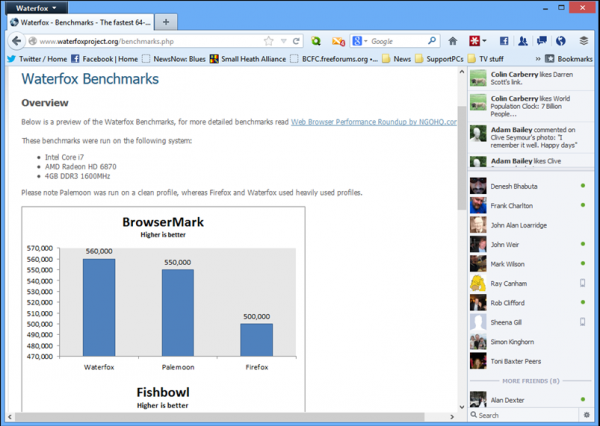 Waterfox 18.0.1 also has its own platform-specific fix for JumpLists, which mean Windows 7 and 8 users now can now right-click the program’s pinned application in the taskbar to access shortcuts to recently opened websites, Private Browsing mode and new tabs and windows. The fix was implemented with the help of MoonChild, developer of Firefox variant
Waterfox 18.0.1 also has its own platform-specific fix for JumpLists, which mean Windows 7 and 8 users now can now right-click the program’s pinned application in the taskbar to access shortcuts to recently opened websites, Private Browsing mode and new tabs and windows. The fix was implemented with the help of MoonChild, developer of Firefox variant 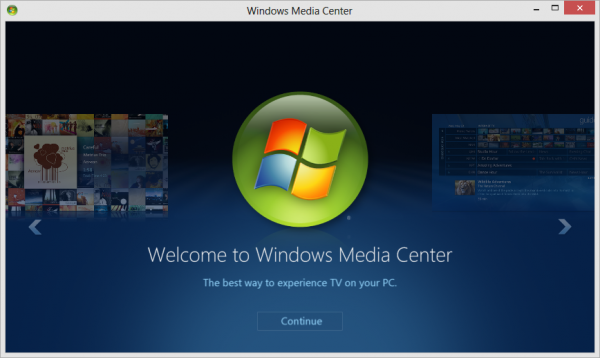
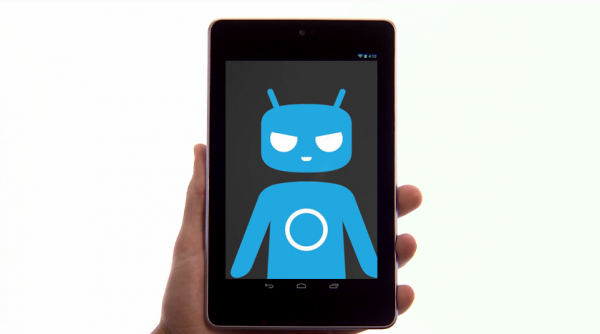
 Following the new smartphone flagships introduced at CES 2013,
Following the new smartphone flagships introduced at CES 2013,  Users of the satellite TV provider’s free
Users of the satellite TV provider’s free  Bitter experience has taught us to be highly skeptical of free backup tools, particularly when they come from commercial companies: they’ll usually include one or more annoying restrictions in an effort to get you to upgrade to something else.
Bitter experience has taught us to be highly skeptical of free backup tools, particularly when they come from commercial companies: they’ll usually include one or more annoying restrictions in an effort to get you to upgrade to something else.
 If you’ve upgraded to Windows 8 and discovered you’re not a fan of the new Start screen then the chances are you’ve already installed one of the many free tools which can give your system a more Windows 7-like appearance. If not, though, IObit has just released
If you’ve upgraded to Windows 8 and discovered you’re not a fan of the new Start screen then the chances are you’ve already installed one of the many free tools which can give your system a more Windows 7-like appearance. If not, though, IObit has just released 

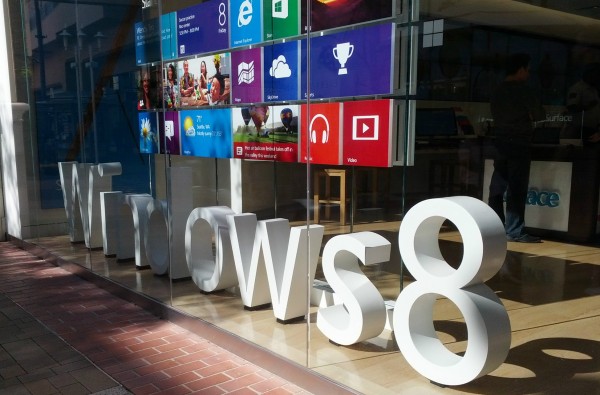

 Carlos Viscarra is a programmer and network administrator and unabashed Apple fan. He is one of BetaNews' most prolific and controversial commenters.
Carlos Viscarra is a programmer and network administrator and unabashed Apple fan. He is one of BetaNews' most prolific and controversial commenters.

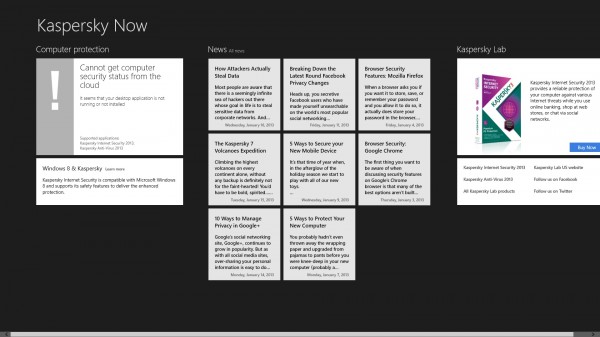

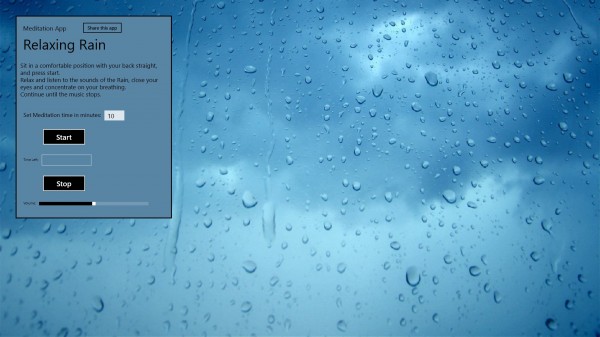




 Like it or not, the New Zealand-based entrepreneur
Like it or not, the New Zealand-based entrepreneur  Whenever new and exciting products are launched, shortly after the big bang a plethora of accessories surface to match even the most peculiar of requirements. Some are a hit while others are a dreadful miss. But what if nothing on the market tickles your fancy? Well if you happen to have a
Whenever new and exciting products are launched, shortly after the big bang a plethora of accessories surface to match even the most peculiar of requirements. Some are a hit while others are a dreadful miss. But what if nothing on the market tickles your fancy? Well if you happen to have a  Arkanoid was an 80′s arcade classic, a great test of hand-eye coordination as you tried to clear a breakout-style pattern of blocks from the screen.
Arkanoid was an 80′s arcade classic, a great test of hand-eye coordination as you tried to clear a breakout-style pattern of blocks from the screen. Play is simple enough, at least in principle, and you’ll recognize the idea if you’ve ever played a breakout-type game. You control a paddle, which sits in front of a pattern of tiles. You fire a ball against the tiles, destroying one, then must move the paddle to catch the ball and bounce it back. If the ball gets past the paddle, you lose a life. If you keep it bouncing back until all the tiles are gone, then you move onto the next level.
Play is simple enough, at least in principle, and you’ll recognize the idea if you’ve ever played a breakout-type game. You control a paddle, which sits in front of a pattern of tiles. You fire a ball against the tiles, destroying one, then must move the paddle to catch the ball and bounce it back. If the ball gets past the paddle, you lose a life. If you keep it bouncing back until all the tiles are gone, then you move onto the next level. Windows 8 users fall into two simple categories. There are those that miss the old way of working and don’t really care too much about the tiled Start screen, and those users who have embraced Microsoft’s new operating system and don’t understand why people are still whittling on about the Start button and menu.
Windows 8 users fall into two simple categories. There are those that miss the old way of working and don’t really care too much about the tiled Start screen, and those users who have embraced Microsoft’s new operating system and don’t understand why people are still whittling on about the Start button and menu. Second in a series.
Second in a series.  There's an excellent debate raging on the front pages of BetaNews for the past few weeks, and it's a topic that I feel quite entrenched in. Seeing as my computer repair business
There's an excellent debate raging on the front pages of BetaNews for the past few weeks, and it's a topic that I feel quite entrenched in. Seeing as my computer repair business 
 In the purple color above, we can see the slow rise by mobile device browsing happening through the end of 2012, but the rise is far from dramatic. In fact, it shows mobile browsing creeping just over 10 percent with deep sags shown by Internet Explorer and Firefox alike. However, look at the runaway pony in this race -- Google Chrome of all items! In fact, Chrome trounced the gains made in the mobile arena by nearly 4 times over.
In the purple color above, we can see the slow rise by mobile device browsing happening through the end of 2012, but the rise is far from dramatic. In fact, it shows mobile browsing creeping just over 10 percent with deep sags shown by Internet Explorer and Firefox alike. However, look at the runaway pony in this race -- Google Chrome of all items! In fact, Chrome trounced the gains made in the mobile arena by nearly 4 times over.
 Derrick Wlodarz is an IT professional who owns Park Ridge, IL (USA) based computer repair company FireLogic. He has over 7+ years of experience in the private and public technology sectors, holds numerous credentials from CompTIA and Microsoft, and is one of a handful of Google Apps Certified Trainers & Deployment Specialists in the States. He is an active member of CompTIA's Subject Matter Expert Technical Advisory Council that shapes the future of CompTIA examinations across the globe. You can reach out to him at
Derrick Wlodarz is an IT professional who owns Park Ridge, IL (USA) based computer repair company FireLogic. He has over 7+ years of experience in the private and public technology sectors, holds numerous credentials from CompTIA and Microsoft, and is one of a handful of Google Apps Certified Trainers & Deployment Specialists in the States. He is an active member of CompTIA's Subject Matter Expert Technical Advisory Council that shapes the future of CompTIA examinations across the globe. You can reach out to him at  What interesting timing. Earlier today, I wrote about my very
What interesting timing. Earlier today, I wrote about my very  Over the past couple of years there has been no shortage of talk about privacy, particularly when it comes to social networks, and especially Facebook. In fact, the service recently made news when the site's privacy settings famously
Over the past couple of years there has been no shortage of talk about privacy, particularly when it comes to social networks, and especially Facebook. In fact, the service recently made news when the site's privacy settings famously 


 Amazon has created a mobile MP3 store optimized specifically for use on iPhones and iPod touches. Built on HTML5, the new store lets users browse the 22 million strong MP3 catalog, and buy tracks directly.
Amazon has created a mobile MP3 store optimized specifically for use on iPhones and iPod touches. Built on HTML5, the new store lets users browse the 22 million strong MP3 catalog, and buy tracks directly. In mid-December, a developer uncovered an
In mid-December, a developer uncovered an  My friend and colleague Joe Wilcox has a long history of quitting tech. He famously declared his
My friend and colleague Joe Wilcox has a long history of quitting tech. He famously declared his  Pokki
Pokki The Settings panel now gives you more control over exactly which options will appear in the Pokki sidebar (your recently used apps, Admin Tools, Computer, Connections, Control Panel and more).
The Settings panel now gives you more control over exactly which options will appear in the Pokki sidebar (your recently used apps, Admin Tools, Computer, Connections, Control Panel and more). Three days ago, the AV-TEST Institute published its latest
Three days ago, the AV-TEST Institute published its latest  Stardock Corporation has released the first major update for its Windows 8 Start button and menu replacement.
Stardock Corporation has released the first major update for its Windows 8 Start button and menu replacement.  Version 1.1 also improves multi-monitor support by adding an option to disable the multi-monitor corner stickiness feature in Windows 8. Users can also now define an additional action when right-clicking the new Start button, bringing up the Win+X menu -- do so via the Desktop > Advanced section. Enabling this option disables the default pop-up menu, but users can now also configure Start8 by right-click on an empty part of the Start menu.
Version 1.1 also improves multi-monitor support by adding an option to disable the multi-monitor corner stickiness feature in Windows 8. Users can also now define an additional action when right-clicking the new Start button, bringing up the Win+X menu -- do so via the Desktop > Advanced section. Enabling this option disables the default pop-up menu, but users can now also configure Start8 by right-click on an empty part of the Start menu. Moonchild Productions has released
Moonchild Productions has released 
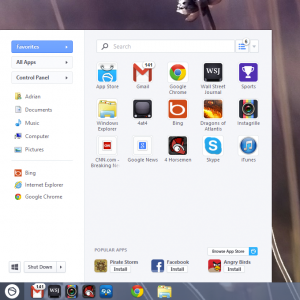 I suspect Microsoft may keep track of the number of people who use a Start button/menu replacement app in Windows 8, but it is not in the company's interest to say so -- both because a large number would reflect badly on the decision to remove the feature and because the company did a lot of, ah, "research" to determine the feature was not necessary. Oh, and the whole privacy thing as well.
I suspect Microsoft may keep track of the number of people who use a Start button/menu replacement app in Windows 8, but it is not in the company's interest to say so -- both because a large number would reflect badly on the decision to remove the feature and because the company did a lot of, ah, "research" to determine the feature was not necessary. Oh, and the whole privacy thing as well. The words
The words  I really should heed my own advice. Yesterday I
I really should heed my own advice. Yesterday I  In late November, Tami Reller, Windows and Windows Live Division chief marketing officer, revealed that Microsoft was planning to
In late November, Tami Reller, Windows and Windows Live Division chief marketing officer, revealed that Microsoft was planning to  When I need to make a payment or send money to someone, I use a bank app on my smartphone. It’s quick and easy, and I can check my balance beforehand to make sure I’ve got enough cash in my account. The app does require me to know the other person’s bank details though, and so isn’t particularly handy for making swift payments to just anyone.
When I need to make a payment or send money to someone, I use a bank app on my smartphone. It’s quick and easy, and I can check my balance beforehand to make sure I’ve got enough cash in my account. The app does require me to know the other person’s bank details though, and so isn’t particularly handy for making swift payments to just anyone.
 There’s no doubt that USB keys are compact, portable and a very convenient way to transfer files and documents. Unfortunately, they’re almost as good as transferring malware, and allowing snoopers to steal information, which is why you might want to control them with a copy of
There’s no doubt that USB keys are compact, portable and a very convenient way to transfer files and documents. Unfortunately, they’re almost as good as transferring malware, and allowing snoopers to steal information, which is why you might want to control them with a copy of 
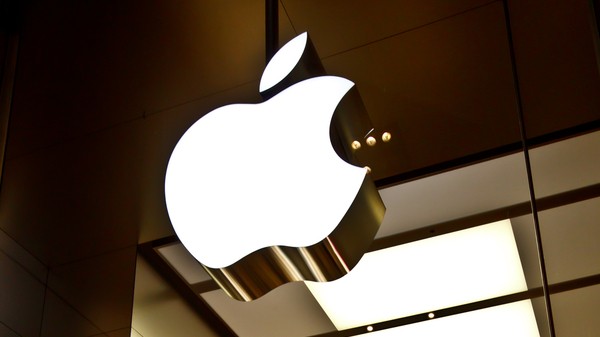

 ChangeWave has new data out today showing an expected, but dramatic, decline in iPhone buying intentions over the next 90 days and unexpected jump for Samsung smartphones -- two models particularly: Galaxy S III and Note II. One-half of US consumers say they'll buy Apple's handset, but that's down from 71 percent three months earlier. Interest in the South Korean manufacturer's devices surged to 21 percent from 13 percent during the same time frame.
ChangeWave has new data out today showing an expected, but dramatic, decline in iPhone buying intentions over the next 90 days and unexpected jump for Samsung smartphones -- two models particularly: Galaxy S III and Note II. One-half of US consumers say they'll buy Apple's handset, but that's down from 71 percent three months earlier. Interest in the South Korean manufacturer's devices surged to 21 percent from 13 percent during the same time frame.

 Who offers the best antivirus protection? It’s not an easy question to answer, but independent testing labs AV-TEST and AV-Comparatives have just released their latest results and reports, and they make very interesting reading.
Who offers the best antivirus protection? It’s not an easy question to answer, but independent testing labs AV-TEST and AV-Comparatives have just released their latest results and reports, and they make very interesting reading. With the
With the 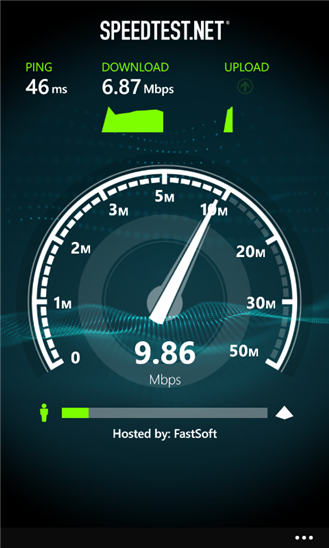 What's the go-to app for testing internet data speeds on mobile devices? Undoubtedly Speedtest.net is one of the most obvious answers coming from Android and iOS users, but not from those rocking Windows Phone 8. For some time, Ookla, the company behind the app, has turned a blind eye to Microsoft's smartphone operating system but, starting Monday, Speedtest.net is finally available for those who prefer tiles to icon grids.
What's the go-to app for testing internet data speeds on mobile devices? Undoubtedly Speedtest.net is one of the most obvious answers coming from Android and iOS users, but not from those rocking Windows Phone 8. For some time, Ookla, the company behind the app, has turned a blind eye to Microsoft's smartphone operating system but, starting Monday, Speedtest.net is finally available for those who prefer tiles to icon grids.
 According to IBM, "The trajectory for steampunk as a popular social and cultural trend is on the rise. From 2009 to 2012 the amount of social media chatter about steampunk rose by an astonishing 11 times." The company predicts "the next two years will witness the shift from low production, high cost ‘craft’ manufacturing to mass production. Mainstream fashion labels, accessories and jewelry will all begin adopting a steampunk aesthetic. For retailers, this is the moment to start laying the groundwork to capitalize on this emerging trend".
According to IBM, "The trajectory for steampunk as a popular social and cultural trend is on the rise. From 2009 to 2012 the amount of social media chatter about steampunk rose by an astonishing 11 times." The company predicts "the next two years will witness the shift from low production, high cost ‘craft’ manufacturing to mass production. Mainstream fashion labels, accessories and jewelry will all begin adopting a steampunk aesthetic. For retailers, this is the moment to start laying the groundwork to capitalize on this emerging trend". When Google unveiled
When Google unveiled  I jumped into Windows 8 way back at the first opportunity -- the Developer Preview. Then moved to the Consumer Preview and finally the Release Preview. But, because I’m something of a procrastinator, I haven’t yet got around to updating my computer to the full version, despite purchasing a copy of the new operating system as soon as it was released.
I jumped into Windows 8 way back at the first opportunity -- the Developer Preview. Then moved to the Consumer Preview and finally the Release Preview. But, because I’m something of a procrastinator, I haven’t yet got around to updating my computer to the full version, despite purchasing a copy of the new operating system as soon as it was released.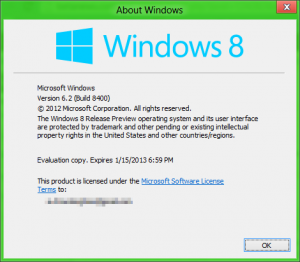 If you purchased a Windows 7 PC in the past few months then you are eligible to get an upgrade for $14.99. If not then you can still get a discount, paying only $39.99. Both offers expire on January 31st of this year.
If you purchased a Windows 7 PC in the past few months then you are eligible to get an upgrade for $14.99. If not then you can still get a discount, paying only $39.99. Both offers expire on January 31st of this year. IObit has released
IObit has released  Other changes include extended support for cleaning the latest versions of new apps, including Spybot Search & Destroy 2.0, Norton AntiVirus 20.2.0.19, Adobe Reader 11.0, TeamViewer 8.0, Google Chrome 23.0 and Skype 6.0.
Other changes include extended support for cleaning the latest versions of new apps, including Spybot Search & Destroy 2.0, Norton AntiVirus 20.2.0.19, Adobe Reader 11.0, TeamViewer 8.0, Google Chrome 23.0 and Skype 6.0. So you bought a
So you bought a  When you’re carrying out some important PC task -- researching a big topic on the web, say -- then it’s easy to become totally immersed. And so, once you start looking at the display, you might not look away again for a very long time.
When you’re carrying out some important PC task -- researching a big topic on the web, say -- then it’s easy to become totally immersed. And so, once you start looking at the display, you might not look away again for a very long time. And elsewhere, a "Vision Therapy" section provides various simple animations and games which the authors claim may improve your eye health. You can watch a ball bounce around the screen, for instance, or try to see the image in a 3D stereogram.
And elsewhere, a "Vision Therapy" section provides various simple animations and games which the authors claim may improve your eye health. You can watch a ball bounce around the screen, for instance, or try to see the image in a 3D stereogram.
 Google has released
Google has released 
 Patch Tuesday came and went last week without Microsoft addressing a glaring error -- a zero-day flaw in Internet Explorer versions 6 through 8 that attackers use to gain control of a computer. The defect did not affect IE versions 9 and 10, which have been called
Patch Tuesday came and went last week without Microsoft addressing a glaring error -- a zero-day flaw in Internet Explorer versions 6 through 8 that attackers use to gain control of a computer. The defect did not affect IE versions 9 and 10, which have been called 

 Oracle has issued an emergency fix for its cross-platform Java software.
Oracle has issued an emergency fix for its cross-platform Java software. 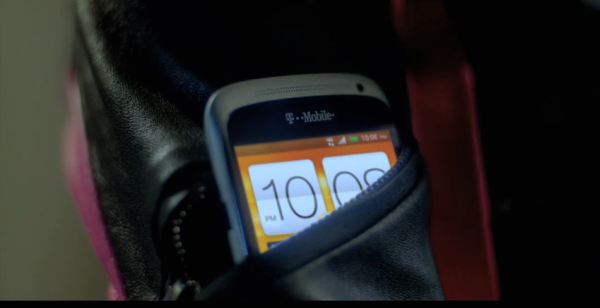
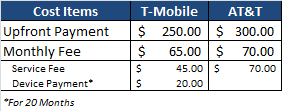
 Sameer Singh is an M&A professional and business strategy consultant focusing on the mobile technology sector. He is founder and editor of
Sameer Singh is an M&A professional and business strategy consultant focusing on the mobile technology sector. He is founder and editor of 
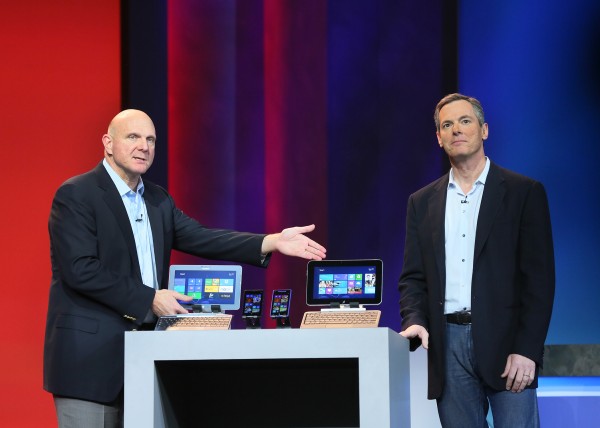

 It may be Friday evening and, according to Jimmy Buffett it is always five o'clock somewhere, but Dropbox has not finished its work week, pushing out one final update. So put away the beer or wine and pick up your Android. Late today the
It may be Friday evening and, according to Jimmy Buffett it is always five o'clock somewhere, but Dropbox has not finished its work week, pushing out one final update. So put away the beer or wine and pick up your Android. Late today the 

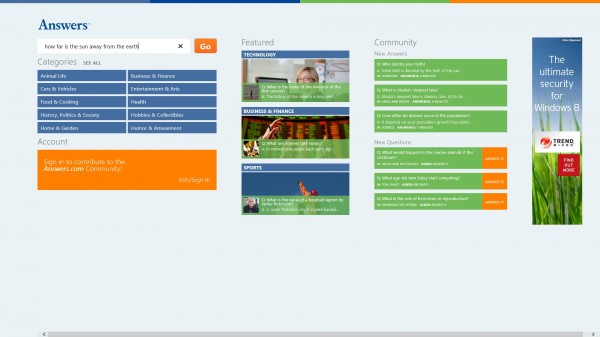

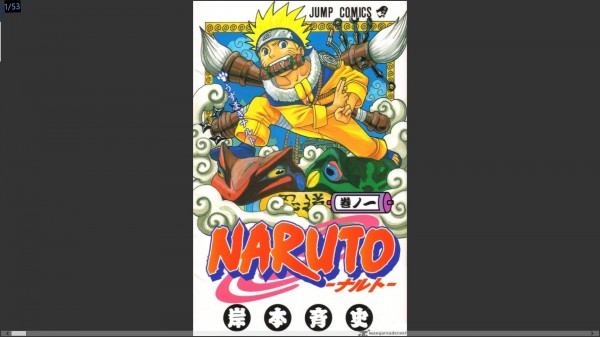

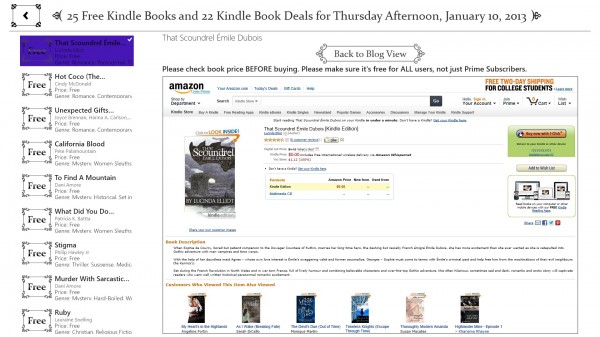



 Let’s be frank: the regular Windows wallpapers are a little dull. And setting up a more dynamic system can take quite some time, as for instance you research different wallpaper changers, and try to find a source which provides images you like.
Let’s be frank: the regular Windows wallpapers are a little dull. And setting up a more dynamic system can take quite some time, as for instance you research different wallpaper changers, and try to find a source which provides images you like. In late December, French consumer electronics company Archos
In late December, French consumer electronics company Archos  It’s a week since
It’s a week since  Shortly after Apple launched its
Shortly after Apple launched its  Microsoft has released
Microsoft has released  As well as adding phone capabilities, users can now also start Skype chats, video and voice calls directly from Outlook too, so long as the contact exists in both Skype and Outlook.
As well as adding phone capabilities, users can now also start Skype chats, video and voice calls directly from Outlook too, so long as the contact exists in both Skype and Outlook. Also released is
Also released is 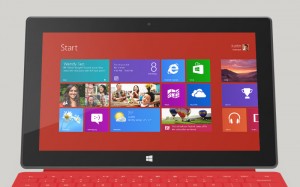 Jailbreaking Windows RT just got easy. Merely days after a complicated
Jailbreaking Windows RT just got easy. Merely days after a complicated  Users of Google’s popular desktop browser have a choice of release channels. If you hate bugs and crashes, there’s the stable version of the browser (which was
Users of Google’s popular desktop browser have a choice of release channels. If you hate bugs and crashes, there’s the stable version of the browser (which was 
 Google has released
Google has released 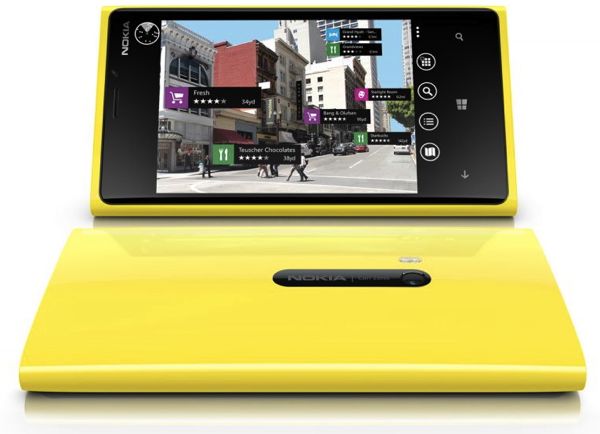

 Adobe has published a public CS2 download page with links to a host of older applications -- the
Adobe has published a public CS2 download page with links to a host of older applications -- the 
 If you’re one of those people who still prefers audio CDs to digital downloads (because you can’t beat a physical product with album art and sleeve notes, right?), but then rip the tracks so you can actually play them, Amazon’s new
If you’re one of those people who still prefers audio CDs to digital downloads (because you can’t beat a physical product with album art and sleeve notes, right?), but then rip the tracks so you can actually play them, Amazon’s new  The problem with making apps -- whether for smartphones, tablets or the Windows Store -- is getting enough people to sit up and take notice. Sure, if it’s good enough, word of mouth might propel it upwards, but the sad truth is a lot of great apps never get the traction they need to succeed.
The problem with making apps -- whether for smartphones, tablets or the Windows Store -- is getting enough people to sit up and take notice. Sure, if it’s good enough, word of mouth might propel it upwards, but the sad truth is a lot of great apps never get the traction they need to succeed. Little under a month after Nokia introduced part of its new
Little under a month after Nokia introduced part of its new  A Distributed Denial of Service attack is no different from someone repeatedly tapping F5 in their web browser, at least accordingly to loose hacktivist collective Anonymous. The group (or someone claiming to be affiliated with it at least) has added a petition to the White House's We the People website, asking the US government to recognize DDoS as a legal form of protesting, and comparing it to the international "occupy" movement.
A Distributed Denial of Service attack is no different from someone repeatedly tapping F5 in their web browser, at least accordingly to loose hacktivist collective Anonymous. The group (or someone claiming to be affiliated with it at least) has added a petition to the White House's We the People website, asking the US government to recognize DDoS as a legal form of protesting, and comparing it to the international "occupy" movement. Far away from events unfolding at CES in Las Vegas, South Korean Android device manufacturer Samsung has unveiled a new device in its Galaxy smartphone lineup. Dubbed the Galaxy S II Plus, the new handset borrows familiar cues from the popular Galaxy S II, but with an added
Far away from events unfolding at CES in Las Vegas, South Korean Android device manufacturer Samsung has unveiled a new device in its Galaxy smartphone lineup. Dubbed the Galaxy S II Plus, the new handset borrows familiar cues from the popular Galaxy S II, but with an added 
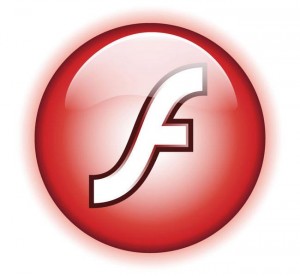 Maybe you’re having problems with Flash, and would like to do a clean reinstall. Or perhaps you’ve decided the technology causes more problems than it solves, and would like to delete it forever. Whatever the reason, you may one day find you want to completely remove Flash from your PC -- but that can sometimes be a problem.
Maybe you’re having problems with Flash, and would like to do a clean reinstall. Or perhaps you’ve decided the technology causes more problems than it solves, and would like to delete it forever. Whatever the reason, you may one day find you want to completely remove Flash from your PC -- but that can sometimes be a problem.








 Whether you’ve accidentally deleted a file, a partition or an entire drive, there are plenty of recovery tools you can turn to for assistance. And most of these claim ease of use as a key selling point. You won’t have to worry about low level drive structures or other complexities, as the program will try to handle everything for you.
Whether you’ve accidentally deleted a file, a partition or an entire drive, there are plenty of recovery tools you can turn to for assistance. And most of these claim ease of use as a key selling point. You won’t have to worry about low level drive structures or other complexities, as the program will try to handle everything for you. But if you’re not too keen on such low-level work, you can also have the program automatically scan your system, looking for and recovering fragments of FAT or NTFS drives. While opening a volume yourself will display an Explorer-type view of the drive, where you’re able to find and recover individual files. (The free version restricts you to only recovering one file at a time; purchase a license and you’ll be able to restore a complete directory tree.)
But if you’re not too keen on such low-level work, you can also have the program automatically scan your system, looking for and recovering fragments of FAT or NTFS drives. While opening a volume yourself will display an Explorer-type view of the drive, where you’re able to find and recover individual files. (The free version restricts you to only recovering one file at a time; purchase a license and you’ll be able to restore a complete directory tree.) Following on from Huawei's
Following on from Huawei's 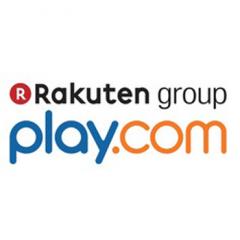 There was a time when
There was a time when  For those of you still using Microsoft's long-standing Instant Messaging service, bad news is on the horizon. The Redmond, Wash.-based software giant revealed in early November last year, that it was
For those of you still using Microsoft's long-standing Instant Messaging service, bad news is on the horizon. The Redmond, Wash.-based software giant revealed in early November last year, that it was  I like a good mystery. When Samsung teased us with ‘
I like a good mystery. When Samsung teased us with ‘


 While the Consumer Electronics Show is mostly about
While the Consumer Electronics Show is mostly about 


 It's tradition.
It's tradition.  Finding the app you want on Windows 8 -- by sight alone -- can at times feel like a really frustrating game of Where’s Wally. If your eyes are already flicking around the screen, it makes sense to use them as a control method, right? Well, that’s what
Finding the app you want on Windows 8 -- by sight alone -- can at times feel like a really frustrating game of Where’s Wally. If your eyes are already flicking around the screen, it makes sense to use them as a control method, right? Well, that’s what  The way it works is pretty straightforward. You look at the app you want to launch, and then hit a button or tap your touchpad. The Gaze interaction technology can be used to select anything on screen. Hold down a button and look at an app, link, tab, or a place on a map, for example, and a circular cursor on screen shows where the tracker thinks you’re looking. Let go of the button to launch or go to the selected item.
The way it works is pretty straightforward. You look at the app you want to launch, and then hit a button or tap your touchpad. The Gaze interaction technology can be used to select anything on screen. Hold down a button and look at an app, link, tab, or a place on a map, for example, and a circular cursor on screen shows where the tracker thinks you’re looking. Let go of the button to launch or go to the selected item. Little more than two months after Windows 8's release, popular cloud storage service Dropbox finally offers an
Little more than two months after Windows 8's release, popular cloud storage service Dropbox finally offers an  Furthermore, when sharing Facebook photos using the Charms bar from within the Photos app, Dropbox is not listed among the available apps that can handle the process. Box, SkyDrive and even Evernote can be used to share items, but weirdly enough Dropbox cannot. No such option exists in the People app either.
Furthermore, when sharing Facebook photos using the Charms bar from within the Photos app, Dropbox is not listed among the available apps that can handle the process. Box, SkyDrive and even Evernote can be used to share items, but weirdly enough Dropbox cannot. No such option exists in the People app either. Following on from the success of last year’s hugely popular Olympics app, BBC Sport has released a new
Following on from the success of last year’s hugely popular Olympics app, BBC Sport has released a new 

 Little more than three months since
Little more than three months since 

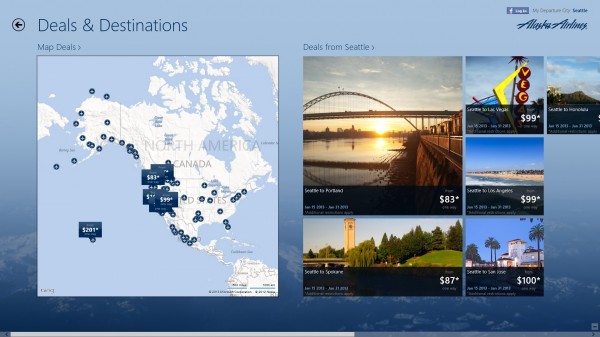












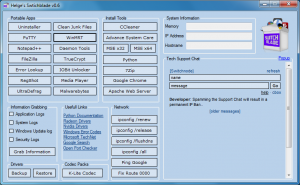

 Second in a series. A friend of mine who is a securities lawyer in New York worked on the 1985 sale of 20th Century Fox by Marvin Davis to Rupert Murdoch. He led a group of New York attorneys to Los Angeles where they spent weeks going over contracts for many Fox films. What they found was that with few exceptions there were no contracts. There were signed letters of intent (agreements to agree) for pictures budgeted at $20-$50 million but almost no actual contracts. Effectively business was being done, movies were being made, and huge sums of money were being transferred on a handshake. That’s how Hollywood tends to do business and it doesn’t go down very well with outsiders, so they for the most part remain outside.
Second in a series. A friend of mine who is a securities lawyer in New York worked on the 1985 sale of 20th Century Fox by Marvin Davis to Rupert Murdoch. He led a group of New York attorneys to Los Angeles where they spent weeks going over contracts for many Fox films. What they found was that with few exceptions there were no contracts. There were signed letters of intent (agreements to agree) for pictures budgeted at $20-$50 million but almost no actual contracts. Effectively business was being done, movies were being made, and huge sums of money were being transferred on a handshake. That’s how Hollywood tends to do business and it doesn’t go down very well with outsiders, so they for the most part remain outside.
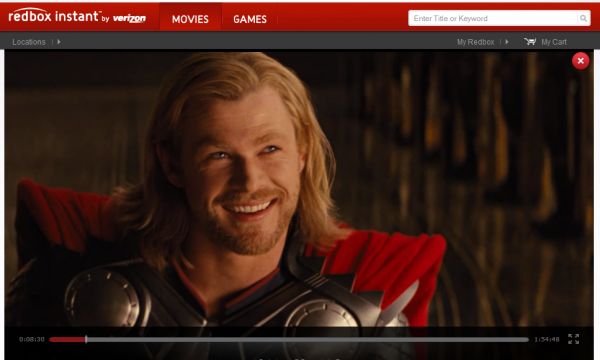
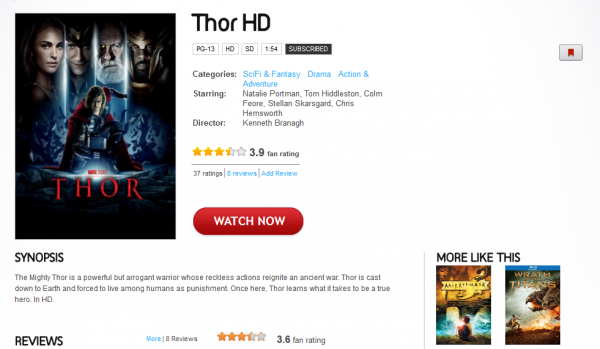
 The popularity of the Bring Your Own Device (BYOD) model has raised a lot of questions about security and the cloud, and firms embracing the trend also have to worry about what might happen to important data if a laptop, tablet, or smartphone gets stolen, lost, or broken while an employee is away from work.
The popularity of the Bring Your Own Device (BYOD) model has raised a lot of questions about security and the cloud, and firms embracing the trend also have to worry about what might happen to important data if a laptop, tablet, or smartphone gets stolen, lost, or broken while an employee is away from work. Are you tired of the standard Windows search tool? You’re not alone. Its indexing component is difficult to control, and uses too many resources; we’ve found the index can become corrupted for no apparent reason; and filtering the results just isn’t as easy as it needs to be.
Are you tired of the standard Windows search tool? You’re not alone. Its indexing component is difficult to control, and uses too many resources; we’ve found the index can become corrupted for no apparent reason; and filtering the results just isn’t as easy as it needs to be.
 Despite
Despite  During a press conference early this afternoon, the Federal Trade Commission announced a
During a press conference early this afternoon, the Federal Trade Commission announced a  Perhaps you're thinking about
Perhaps you're thinking about 



